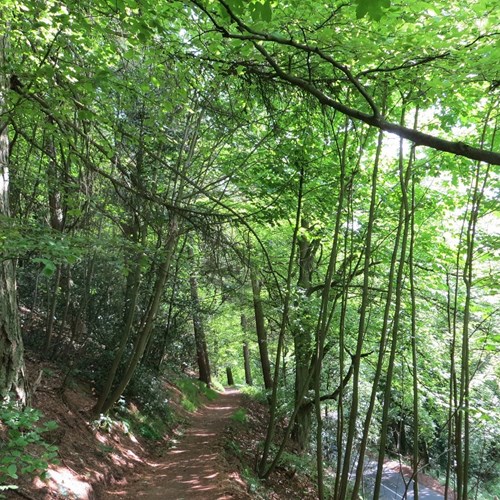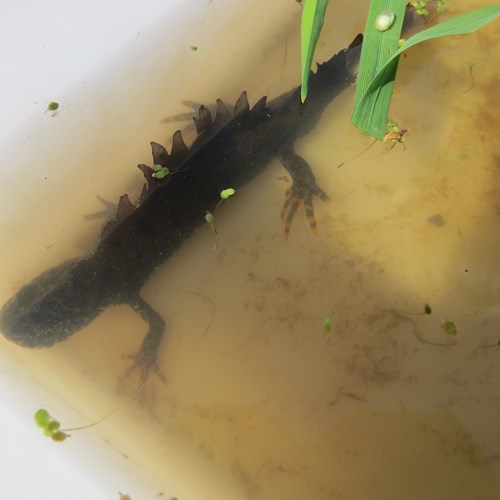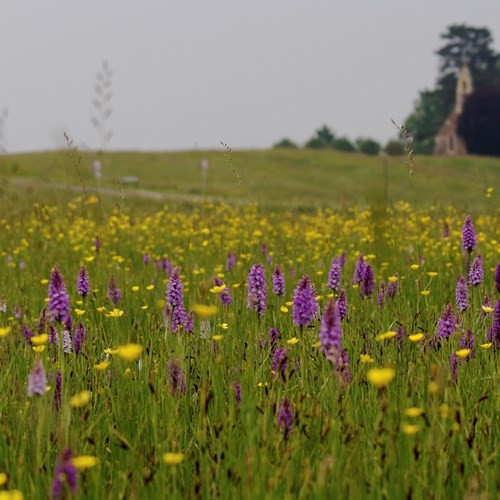The State of Nature report 2019 has been released outlining the condition of the UK's wildlife and the pressures it's facing.
We’re saddened to read of the continued net loss of nature in the UK. Here in the Malverns, thanks to over 130 years of our care the key pressures identified in the report, including intensive agriculture, use of insecticides, and building development have had little effect on the Hills and Commons.
There has been no loss of priority habitats as we have continued to maintain and restore special grassland, mire and heath habitats on the Hills.
However, we are not an island and our wildlife and natural processes are part of the wider picture of the UK’s environment.
We're working hard to protect and conserve wildlife by addressing some the challenges facing the Malvern Hills landscape. Here are some key points from the report and how our management of the Malvern Hills and Commons is benefiting our natural environment.
“97% of wildflower meadows were lost between the 1930’s and 1984.”
Our wildflower meadows are being maintained and expanded. As a result of our care, improvements in the condition of the meadow on Malvern Common has led to its designation as a Site of Special Scientific Interest. A late cut over a number of years has allowed the wildflowers, including orchids, to flourish. Taking the hay late in the season also benefits the butterflies, bees and skylarks that nest on the common.
Volunteers’ efforts to transplant green hay from Malvern Common to the Link Common have been rewarded with a bloom of orchids. The diversity of the meadow has increased and we will continue to manage the grassland to conserve this rare habitat.
The meadows of Woodford’s Meadow and the wide verges of Guarlford Road are also buzzing with life in the spring and summer.
“90% of lowland ponds in the UK were lost in the 20th century.”
We care for more than 30 ponds of various sizes across the Hills and Commons. Over time, these waterbodies can silt up leading to a loss of open water which affects newts, dragonflies and aquatic vegetation.
Over the last 2 years we have restored a number of ponds along Guarlford Road and on Malvern Common by removing silt and woody vegetation which dries out the pond.
This winter we will be carrying out work on four ponds on Castlemorton Common to remove invasive non-native species which are suffocating the ponds resulting in a loss of native rare flora.
“Woodland cover in the UK increased by 9% between 1998 and 2018, although only 44% of woodland is managed sustainably”
30% of the land under our care is woodland, in addition to orchards, in-field trees, hedgerows and tree avenues we look after.
We support the traditional management of ancient woodlands including the woodland at Park Wood. A coppicing scheme has been underway here since 2008 and has benefited dormice, woodland butterflies and flora including the unusual toothwort. In the springtime, the ground is covered in a stunning display of bluebells and wild garlic.
Invasive woodland plants are managed to promote diversity and encourage natural regeneration of native species which support a greater abundance and diversity of wildlife. In particular, we have tackled laurel and rhododendron in woodlands on the slopes of North Hill which will improve the condition of this habitat.
“12% of established non-native species have a demonstrated negative ecological or human impact”
As described above, controlling invasive species is part of our active management on conserve the wide variety of habitats in this landscape. We continue to survey and monitor the variety of habitats of the Hills and Commons to identify and plan future work.
The future
Your support for our charity, through the levy, car parking and donations and legacies enables us to continue to care for this iconic landscape for both people and wildlife.
The full State of Nature report can be found here.



